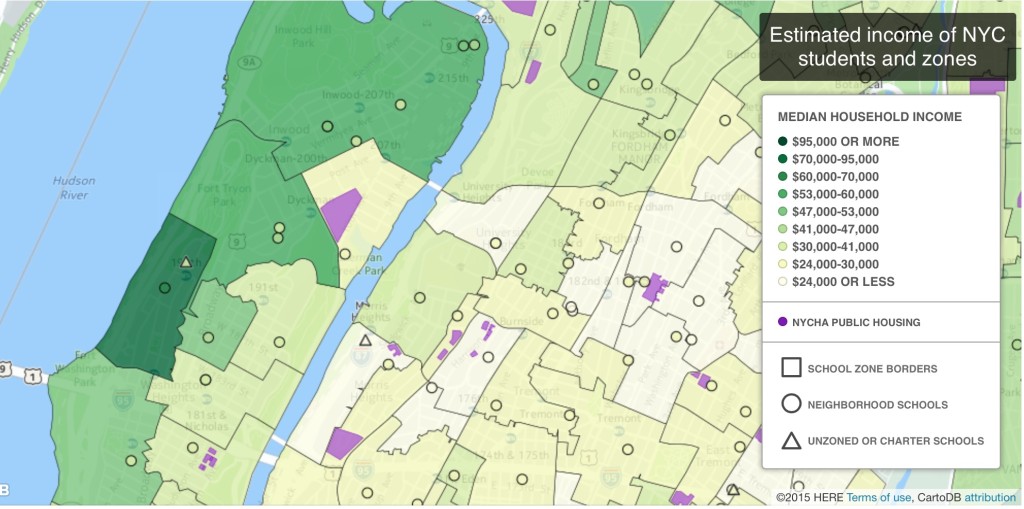
… there are dozens of high-poverty elementary schools that serve mostly black and Latino children that are located in far more racially and economically mixed neighborhoods.
… the city’s schools are even more economically and racially segregated than the neighborhoods – and for economically disadvantaged students, that usually translates to inferior education.
… analysis suggests that many parents, dissatisfied with their neighborhood schools, vote with their feet and send their children to public gifted programs, schools of choice, charter schools or private schools. It follows that some racial and economic integration can be achieved without changing zone lines or assigning kids to schools outside their neighborhoods—measures which are often politically fraught.
And researchers propose increased classroom equality as the best in practice solution:
The key (to) improve these schools (is) to motivate more middle class parents who live in economically mixed neighborhoods (or white and Asian parents living in racially mixed neighborhoods) to send their children to the neighborhood schools. Research shows that attracting higher-income students to such schools typically improves classroom education for all the students.
